
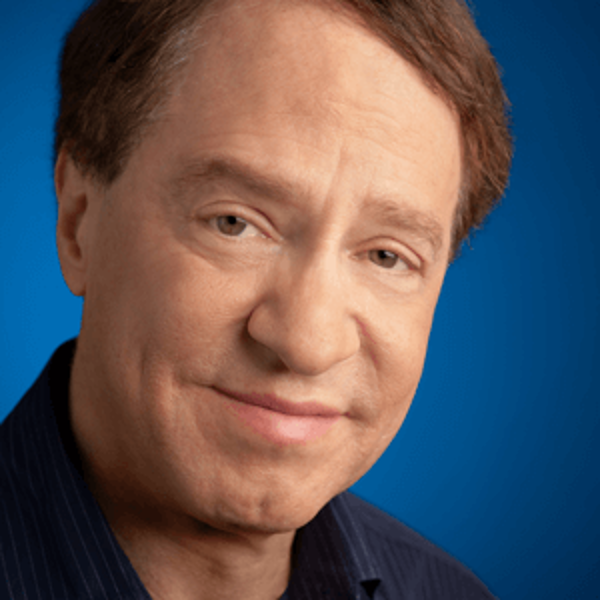 Ray Kurzweil, Kurzweil Technologies photo.
Ray Kurzweil, Kurzweil Technologies photo.
This is Part Two of the Plato and Young Icarus series. Part One set out the debate in neoclassical terms between those who would slow down AI and those who would speed it up. This is an age-old struggle between fear and hope, between those who seek to maintain the status quo and those who would disrupt it, who would bravely fly to the sun of superintelligence. See part one: Plato and Young Icarus Were Right: do not heed the frightening shadow talk giving false warnings of superintelligent AI.
In this second installment of the series, we hear from a principal proponent of the speed-up side, Ray Kurzweil, lead Researcher and AI Visionary at Google.
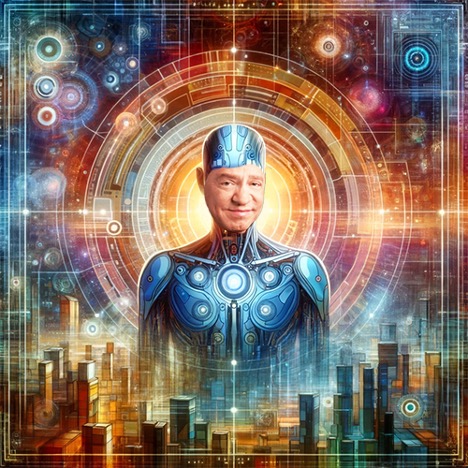 Ray Kurzweil futurist image in modern sci-fi style using Ralph Losey’s Visual Muse
Ray Kurzweil futurist image in modern sci-fi style using Ralph Losey’s Visual Muse
Ray Kurzweil: Futurologist Who Predicted in 1999 AGI Tools by 2029
The key visionary of AI is Ray Kurzweil, a scientist, inventor, AI prophet and writer. He has been well known since the 1960s for his boy-genius computer inventions (he appeared on I’ve Got a Secret in 1965 at age 17) and later for the many other inventions and companies he started in a variety of technology fields. For instance, in his 20s he pioneered software that could digitize printed text (OCR), and in his 30s he cofounded a music synthesizer company with Stevie Wonder.
In 2012, Ray Kurzweil, who was by then a living legend, was hired by Google co-founder Larry Page as Google’s Director of Engineering. He and his Google team of software programmers studied ways that computers could: process, interpret, understand, and use human language in everyday applications. Ray, now 75, still works at Google as its Principal Researcher and AI Visionary. Google’s latest AI product is Gemini, an LLM generative AI model that Google claims equals or exceeds Open AI’s GPT4 and adds new multimodal capabilities. Google has started to integrate the new Gemini AI algorithms into its existing GPT chat product, Bard. The race is on. Ray is behind the scenes smiling, probably urging Goggle to go even faster.
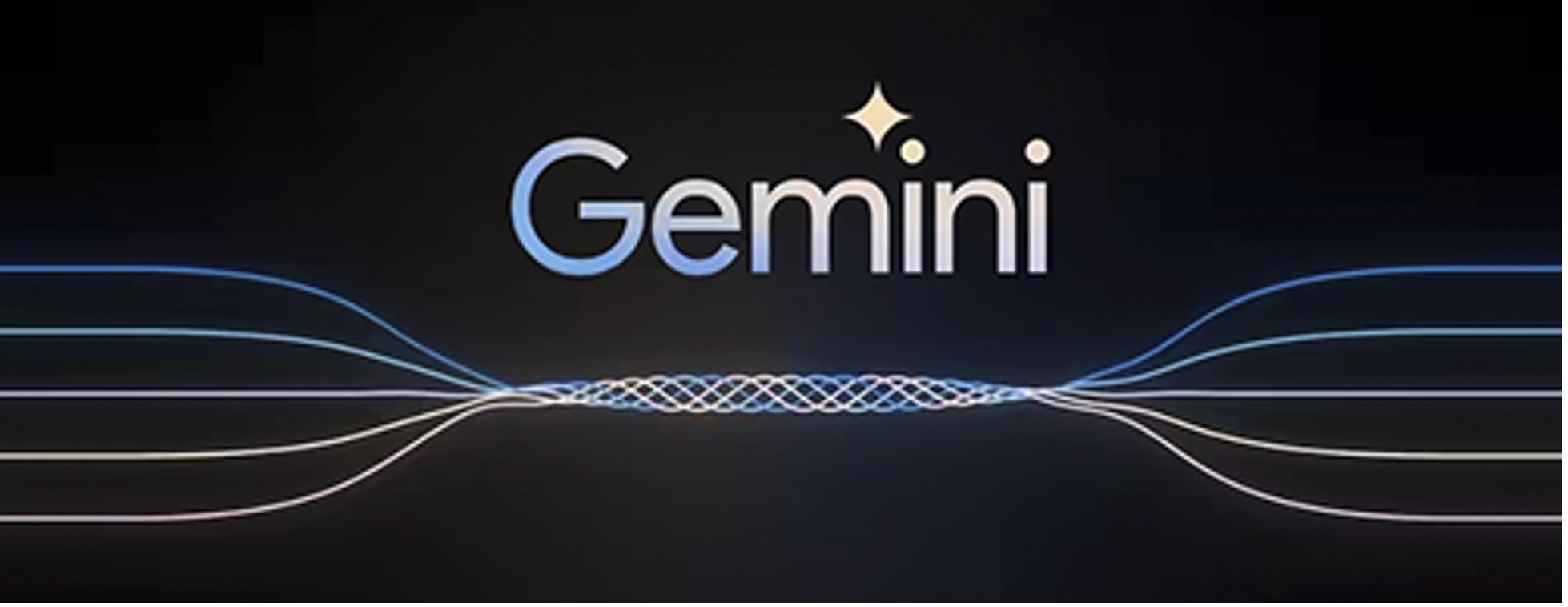 Gemini was announced by Google on December 6, 2023. Click on the image to see its promotional video.
Gemini was announced by Google on December 6, 2023. Click on the image to see its promotional video.
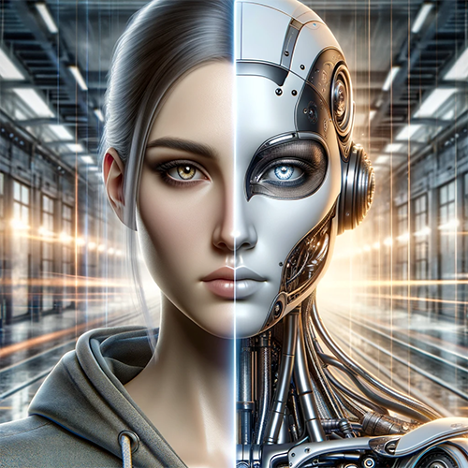 Gemini AI and Human image by Losey combining realistic and futuristic styles using his Visual Muse.
Gemini AI and Human image by Losey combining realistic and futuristic styles using his Visual Muse.
Ray Kurzweil’s most notable inventions include:
Ray predicts that computers will improve to the point that they attain general artificial intelligence levels by 2029. That is consistent with his even more dramatic prediction, first made in 1999, that profound superintelligent AIs would usher in what he and others call The Technological Singularity. His predicted date for that now is 2045. See e.g. the following books by Kurzweil:
For a complete list of Ray Kurzweil’s many other books, including a few far out ones on immortality, see e.g. the Kurzweil Library + collections. Also see, Singularity Hub and the Singularity University. For background on superintelligence and the concept of The Singularity, see numerous articles at the e-Discovery Team blog, especially: ChatGTP-4 Prompted To Talk With Itself About “The Singularity”; Start Preparing For “THE SINGULARITY” Part One and Part Two (2023).
Ray has been a strong proponent of AI since 1999 and tireless promoter of the advantages of superintelligence. Ray Kurzweil is not backing down now. He welcomes the smart computer helpers. They will augment our own intelligence, not be alien overlords who take take away our jobs. Ray predicts our speed of invention will continue to increase exponentially. He envisions a positive future where we merge with machines and attain unimaginably high levels of intelligence and ability, a world where we can enjoy new, meaningful kinds work and creativity beyond our wildest dreams.
 Moving fast expressed in combined Water Color and Comic Book styles using Visual Muse.
Moving fast expressed in combined Water Color and Comic Book styles using Visual Muse.
Do Not Pause Now
On May 5, 2023, Kurzweil publicly commented on the open letter proposal of the Future of Life Institute to slow down AI development. It was supported by hundreds of scientists and famous intellectuals.
Regarding the open letter to “pause” research on AI “more powerful than GPT-4,” this criterion is too vague to be practical. And the proposal faces a serious coordination problem: those that agree to a pause may fall far behind corporations or nations that disagree. There are tremendous benefits to advancing AI in critical fields such as medicine and health, education, pursuit of renewable energy sources to replace fossil fuels, and scores of other fields. I didn’t sign, because I believe we can address the signers’ safety concerns in a more tailored way that doesn’t compromise these vital lines of research.
Note From Ray Kurzweil on the Recent Call to Pause Work on AI More Powerful Than GPT
Advanced AI Will Create New Jobs and Prosperity
Ray Kurzweil is, in the opinion of many, the world’s greatest living futurist, a new term for prophet. Much like the Pythia in Ancient Greece, he makes his predictions both by dream inspirations, which he calls sleep learning, and wide awake factual research. Pythia: Prediction of AI-Human Merger as a Best Possible Future; also see Kurzweil and Terry Grossman, M.D. Transcend (2009). Consider the following question and answer exchange between Ray and Lex Fridman, an AI research scientist at MIT and video podcaster. The Personal Income Chart discussed and shown below is one example of how Ray’s predictions are based on solid fact. Note, this interview was made on September 16, 2022, before OpenAI’s breakthroughs with ChatGPT 3.5 and 4.0. It concerns the related core questions of employment, AI-Human merger and enhancement of human intelligence.
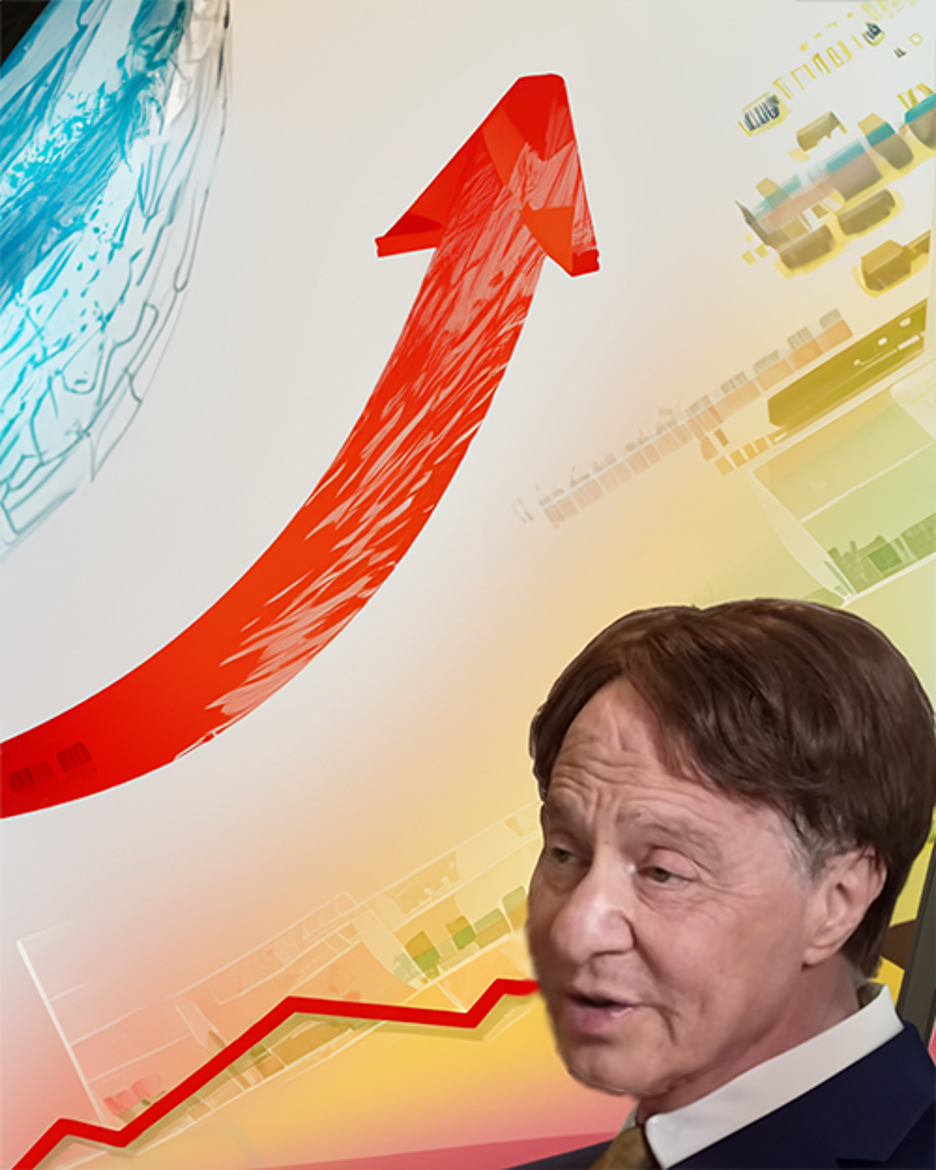 Kurzweil image from Lex Fridman YouTube video and Photoshop AI feature to show exponential curve of AI improvement, which he predicted and is coming true by Ralph Losey.
Kurzweil image from Lex Fridman YouTube video and Photoshop AI feature to show exponential curve of AI improvement, which he predicted and is coming true by Ralph Losey.
Lex Fridman. Is it more likely that we merge with AI, or that AI replaces us? . . .
Ray Kurzweil. A lot of people just think computers come along, and we compete with them. We can’t really compete, and that’s the end of it. As opposed to them increasing our abilities. If you look at most technology, it increases our abilities. Look at the history of work. Look at what people did 100 years ago. Does any of that exist anymore? If you were to predict that all of these jobs would go away and would be done by machines, people would say, well, no one’s going have jobs and it’s going be massive unemployment. But I show in this book that’s coming out (The Singularity Is Nearer: When We Merge with Computers, expected publication June 18, 2024), the amount of people that are working, even as a percentage of the population, has gone way up.

Lex Fridman. We’re looking at the x-axis year from 1774 to 2024 and on the y-axis, personal income per capita in constant dollars and it’s growing super linearly.
Ray Kurzweil. 2021 constant dollars and it’s gone way up. That’s not what you would predict, given that we would predict that all these jobs would go away. But the reason it’s gone up is because we’ve basically enhanced our own capabilities by using these machines as opposed to them just competing with us. That’s a key way in which we’re going be able to become far smarter than we are now, by increasing the number of different parameters we can consider in making a decision.
Lex Fridman. … There is a big concern that automation, especially powerful AI, will get rid of jobs, that people will lose jobs. As you were saying, the sense is that throughout the history of automation in the Twentieth Century, automation did not do that, ultimately. So the question is, will this time be different?
Ray Kurzweil. Right. That is the question. Will this time be different? It really has to do with how quickly we can merge with this type of intelligence. Whether LaMDA and GPT3 is out there, and maybe it overcomes some of its key problems, and we really have an enhanced human intelligence. That might be a negative scenario. (Editor – Meaning – there might be problems at first with the software.) But, I mean, that’s why we create technology, to enhance ourselves. And I believe we will be enhanced. We are not just going to sit here with three hundred million modules in our neocortex, we are going to be able to go beyond that. Because that’s useful, but we can multiply that by ten, a hundred, a thousand, a million. You might think what’s the point of doing that? It’s like asking somebody who has never heard music, well, what’s the value of music. You can’t appreciate it until you have created it.
Ray Kurzweil: Singularity Superintelligence and Immortality (September 16, 2022), 39:35 – 43:40.
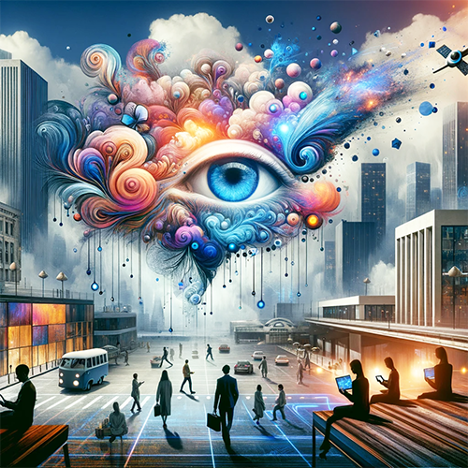 Accelerating Intelligence image with combined surrealistic and contemporary realism styles using Visual Muse by Ralph Losey.
Accelerating Intelligence image with combined surrealistic and contemporary realism styles using Visual Muse by Ralph Losey.
Ray Kurzweil on the Turing Test
In another excellent interview of Ray Kurzweil in the Star Talk podcast, the host, Neil deGrasse, elicits more fascinating dialogue. I’ve created some Ray Kurzweil robot animations to share what he said using Kurzweil’s own voice from the interview. The first AI created instruction video is on the well-known Turing test, conceived by Alan Turing, of a machine’s ability to exhibit intelligent behavior equivalent to, or indistinguishable from, that of a human. Here is the YouTube published version of the below video.
 Ray Kurzweil Robot on the Turing Test and Kurzweil’s once outrageous prediction it will be passed in 2029 created by Ralph Losey with AI tools.
Ray Kurzweil Robot on the Turing Test and Kurzweil’s once outrageous prediction it will be passed in 2029 created by Ralph Losey with AI tools.
Ray Kurzweil on Adding AI to Our Own Intelligence
Future Ray Kurzweil returns below in robot form to speak about improving the Human AI interface. Again, in this simulation Ray’s own words and voice are used from the Star Talk podcast, with the host, Neil deGrasse. Ray makes clear in the interview with deGrasse that there is no need to fear AI, they are not invaders from Mars. They are an extension of our own intelligence, our own brain. We invented AI as a tool to improve our own intelligence. We will not fight them; we will merge with them.
Kurzweil predicts in the Star Talk interview, Ray Kurzweil Wants To Put Nanobots In Our Bloodstream, that we will greatly improve our interface with AI in the coming years, moving well beyond the clunky keyboard inputs and hand held smart phones of today. I highly recommend you watch the entire video interview. Kurzweil’s lengthy discussion of this is not quoted in the robot video below that I made, just an excerpt. In the full interview Ray describes to the initially skeptical Neil deGrasse how AI human hybrid communications will become far more efficient soon, ultimately using nanobyte technology. Direct interfaces with our cortex using different devices and technologies will become as natural and ubiquitous as smart phones use is today.
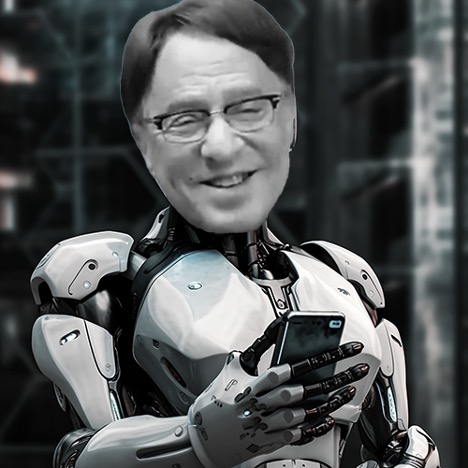 Ray Kurzweil depicted as a future robot using an old smart phone, in photorealistic style by Ralph Losey using Visual Muse and Photoshop.
Ray Kurzweil depicted as a future robot using an old smart phone, in photorealistic style by Ralph Losey using Visual Muse and Photoshop.
Ray Kurzweil, with the help of Google, and others, is inventing a future where we will all merge with our AIs and thereby greatly enhance our own intelligence and abilities. AI will not be separate from us as disembodied entities. Our AI tools will be part of us. Kurzweil says that we will soon be able to use our AI tools, like we use smart phones of today, to double our brain capacities, then multiply it by ten, by a hundred, a thousand, ultimately by a million. Kurzweil’s message is that there is no need to fear AI because we are the AI. Go ahead and add artificial intelligence to your own intelligence, you are already used to it with your connected smart phones. Get ready for far better add-ons, far greater intelligence. See the short YouTube video below,